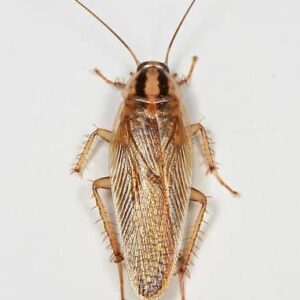
Asian cockroach

Habitant, Anatomy and Diet of The Asian Cockroach
Scientifically identified as Blattella asahinai, have earned a reputation as familiar household nuisances.
Asian cockroaches exhibit a notable preference for warm and humid environments, often making homes in kitchens, bathrooms, and other moisture-rich areas. Their adaptability to diverse living conditions, both indoors and outdoors, contributes to their widespread presence in residential and urban settings.
These insects are characterized by a compact build, typically measuring around 0.6 to 1 inch in length. Their bodies feature a flat shape, allowing them to navigate through narrow spaces with ease. This streamlined anatomy contributes to their elusive nature and adaptability in indoor environments.
Asian cockroaches reveal a diverse appetite. These omnivores consume a range of food sources, including organic debris, leftover crumbs, and even plant matter. Their adaptability in finding sustenance contributes to their resilience in various environments.
Reproduction and Life Cycle
Transitioning into their reproductive habits, Asian cockroaches are known for their prolific breeding. Female cockroaches lay egg cases, known as oothecae, in sheltered locations. This reproductive strategy, coupled with rapid maturation, enables Asian cockroach populations to expand swiftly, posing challenges for homeowners.
The life cycle of Asian cockroaches comprises several stages: egg, nymph, and adult. After the eggs hatch, nymphs undergo molting stages before maturing into reproductive adults. This cyclical process ensures the continuation of their presence and ongoing challenges for pest control.
Environmental Impact and Enduring Legacy
The environmental impact of Asian cockroaches extends beyond their intrusion into homes. Their scavenging behavior can disrupt local ecosystems, affecting both plant and insect populations. Understanding these consequences is crucial for managing their presence and mitigating potential ecological disruptions.
Asian cockroaches have been around for an extended period, with their existence spanning several decades. Their successful adaptation to various environmental conditions and the ability to coexist with humans contribute to their age-old legacy as persistent household pests.
Conclusion
In conclusion, the Asian cockroach, though a common household pest, provides a fascinating study in adaptability and resilience. By unraveling their habitats, reproductive strategies, feeding habits, and ecological impact, homeowners can gain valuable insights into managing and coexisting with these enduring insects. The key lies in implementing effective pest control measures while recognizing the integral role Asian cockroaches play in the intricate ecosystems they inhabit.

